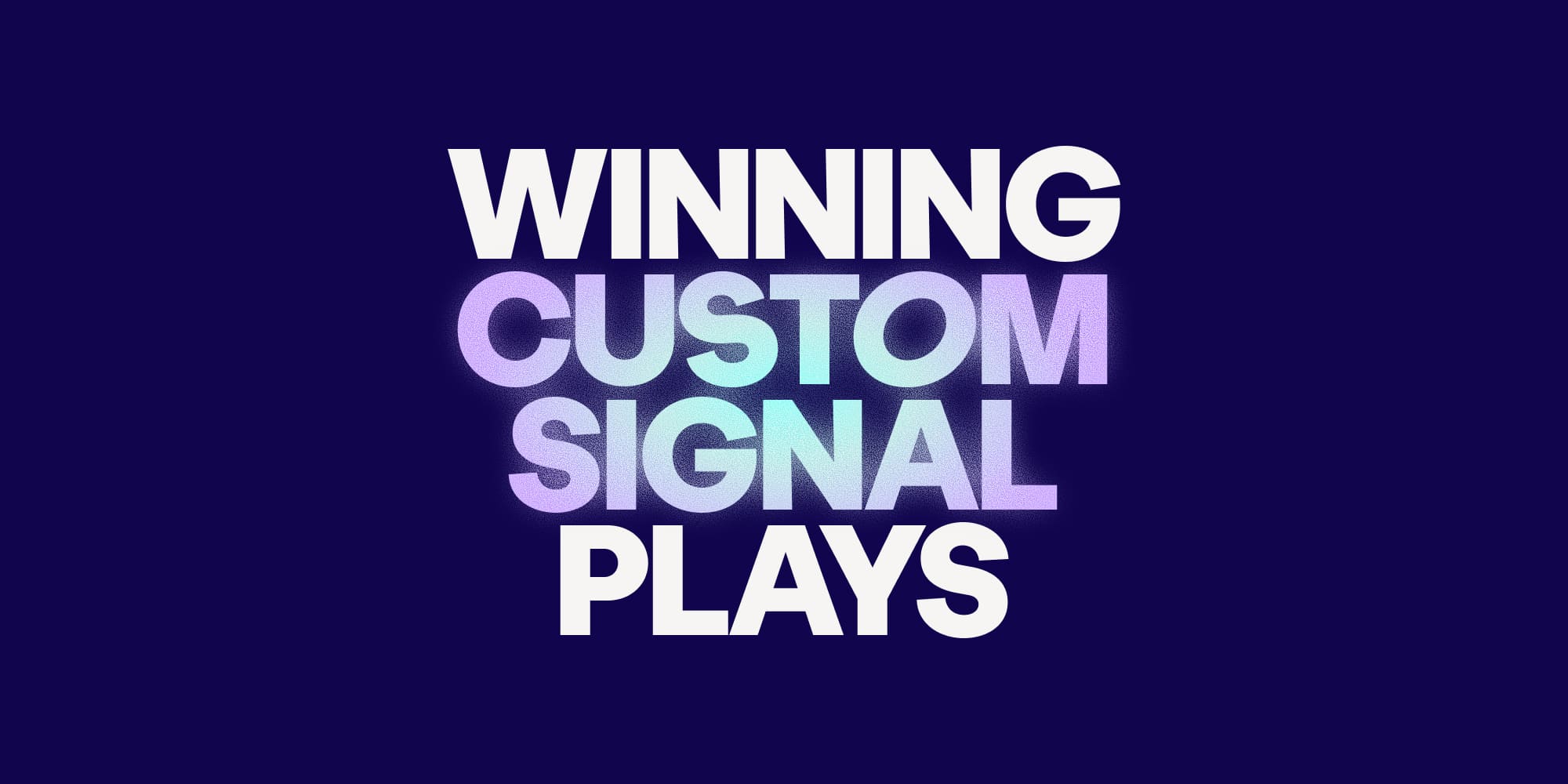A new approach to increasing Customer Lifetime Value (CLV)
•
March 2, 2023
.jpg)
Against rising customer acquisition costs, budget pressures, and threats of recession, reliable champion customers are worth their weight in gold. Everyone wants to know how to increase their Customer Lifetime Value.
But add into the mix recurring tech lay-offs and The Great Resignation, and you’ll see that it’s no longer enough to nurture strong relationships with your client companies. In order to stay agile and top-of-mind when personnel turnover is high, you want to be building strong personal relationships with your customers too.
This is how tracking individual contacts can help you leverage your champions to maximize your sales pipeline and uncover new selling opportunities.
In this blog, we’ll dive into the importance of tracking your champion customers and how this is done in practice. We’ll also discuss how pursuing a new metric, Individual Lifetime Value, can help you pivot your sales strategy to take advantage of current workforce mobility.
What is Customer Lifetime Value?
There are few things that can top the feeling of closing a big deal with a new customer. When that same customer keeps coming back for more, you know you’re on to something extra special.
Customer Lifetime Value (or CLV) is the average revenue amount you derive from a single customer over the entire lifetime in their account. Or in other words: how much you make from them before they churn. The metric is calculated as follows:
Customer Lifetime Value = Customer Value x Average Customer Lifespan
Here's how to break that down:

How to increase Customer Lifetime Value
It follows that the better you are at retaining B2B customers, achieving renewals, cross-selling, or upselling, the higher your CLV will be. In this way, your CLV serves as a good indicator of customer satisfaction.
For example, maximizing your CLV in an account-based strategy means pleasing multiple decision-makers with a solution that fits their company needs. Ideally, once the company is onboard and converted to your product or service, it will become an integral, long-term part of their business infrastructure and you’ll be expected to scale your solution with their growth. That’s a huge win for your CLV.
Now, there’s nothing wrong with looking at your CLV like this. However, over-focusing on your CLV could mean that you’re missing opportunities elsewhere - and that’s why we propose an extra metric to keep your sales strategy agile.
A new metric: Individual Lifetime Value
We talked above about the ideal B2B selling situation: you convince a company to invest in your product or service, they onboard their team with it, and they love the results. You even manage an extra upsell. So far, so good.
Now imagine that, for whatever reason, that business falls into difficulty and closes operations. Staff are laid off and move on. You’ve now lost your account and your CLV suffers - but how can you capitalize on that strong customer relationship?
Chances are that within that company, you’ll have connected with numerous decision-makers and leaders who are now familiar with you and your solution. Since they’re forced to move on to new companies or ventures, now would be a great time for you to reach out to them as individuals.
In this way, you shift the focus of your selling from Customer Lifetime Value to Individual Lifetime Value - that is, the revenue you could derive through any single individual. This allows you to turn the current climate of high turnovers and mobility to your advantage:
- New selling opportunities may appear if your contacts want to take your solution to a new company.
- Champion contacts can spread awareness of your product across new teams or industries.
- You can expand and accelerate your sales pipeline with referrals from champions; 71% of B2Bs report higher conversion rates from referrals than non-referrals, with 69% saying they also take less time to close.
How to incorporate Individual Lifetime Value into your sales strategy
So how do we go about pursuing this new metric for better sales results?
- Identify your individuals of interest.
The individuals you want to focus on are your high-value contacts or champions. These are your power-users, evangelists, big decision-makers, and industry thought leaders. They should be highly enthusiastic about what you offer and influential enough to recommend you to other decision-makers.
- Make contact tracking a part of your sales strategy.
Contact tracking is the concept of keeping tabs on your key individuals when they change roles, whether it’s through a promotion or new job. You can track contacts manually or make it automated, as we’ll explain below - the important thing is that you find a system that keeps you on top of any changes so you can engage in good time.
- Optimize your outreach.
No matter how warm they are, your contact probably won’t appreciate a sales pitch on the first day of their new job. That doesn’t mean you can’t send them a personalized congratulatory note to let them know you’re still keen to stay in touch. Give them time to settle, then you can broach the subject of their purchasing considerations when the time is right.
- Measure their ILV.
Our Individual Lifetime Value metric requires some qualitative thinking, but you can still estimate their monetary impact on your sales cycle. Think of your individual champions as informal partners or affiliates of your brand, and consider some of the following when calculating ILV:
- Whether they have the influence to introduce your product in their new position
- Whether they are promoting you within their company or across their personal network
- How they directly contribute to new lead generation or purchases
- The value of the opportunities they contribute to
Basic contact tracking
If you haven’t already incorporated some form of contact tracking into your prospecting, you might be missing out on some interesting opportunities. Here are some basic tactics to help you track and target individuals of interest:
- Take a look through your existing CRM for your key buying personas. Check each of these on LinkedIn and create a new list for those who have moved to new jobs. You can tailor your messaging according to whether they’ve been promoted or moved companies and start to gauge whether they’re considering a purchase.
- Expand your search. Once you’ve compiled a list of key decision-makers and buyers, do the same for other users of your product; those who are further down the decision-making hierarchy but also moving jobs. These are people who will be familiar with your product or service’s value who might recommend it if they start working elsewhere. If these contacts aren’t in your CRM, you might ask your product team for more detailed user data.
- Look for job openings in your target companies. This is a great way to get ahead when it comes to cultivating new relationships. By anticipating new hires, you can plan how to connect with them and warm them up as they settle into your target company.
The best thing about this strategy is that it helps you uncover new opportunities from data already in your CRM and make the most of your qualified leads. The only drawback of the tactics laid out above is that they are time-consuming and require a fair amount of manual effort.
But that’s where Amplemarket can help!
Tracking job moves with Amplemarket
Amplemarket’s platform can help you save time on tracking contacts through automated Job Change Alerts.
Instead of manually identifying and researching your prospects’ job history, you can activate the Job Change Alert function on selected prospects to notify you as soon as contact job change is detected. This allows you to be highly responsive to new opportunities without having to trawl LinkedIn!
.png)
Alternatively, you can use Amplemarket's Company and Contact Searcher to filter results with “Recent Job Change” filters and combine this with the “Past Company” filter to find leads who worked at a specific company, e.g. a previous customer of yours:
.png)
How to re-engage with previous users
Once you have your list of job-change prospects, you’ll need to reach out to them.
Whether you know your prospect well or whether this is your first direct contact with them, it’s important to start soft and not push them too hard too soon! A personalized congratulatory note is a great way to open the conversation as your prospect settles into a new job. Consider sending a small gift to celebrate their new move.
From here, you can nurture these prospects with a specially-designed outreach sequence or even through targeted ads (i.e. create custom a job change audience on LinkedIn). The goal is to ensure that as soon as they’re in a position to buy, you’ll be top of mind.
For your power users and brand champions, you can ask them to refer you to their network or new company. By doing some prior research on the key decision-makers surrounding them you can target specific introductions and make sure their recommendations fall on the right ears!
A new strategy to increase Customer Lifetime Value
The concept of “Individual Lifetime Value” can help sales teams reframe their B2B strategy around current economic trends. Personnel turnover need not impinge your selling opportunities; on the contrary, incorporating job change tracking into your prospecting processes can open up a world of new selling opportunities and referrals. It’s time to rethink your B2B relationships!
Want to learn more about Amplemarket's Job Change Alerts? Click here for more info on how they can boost the scope and quality of your prospecting or request a demo!
Subscribe to Amplemarket Blog
Sales tips, email resources, marketing content, and more.










